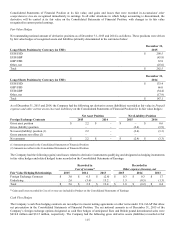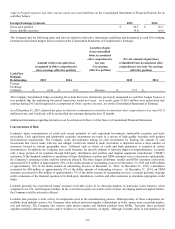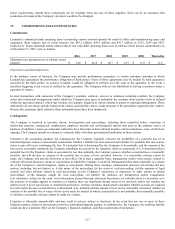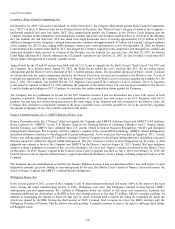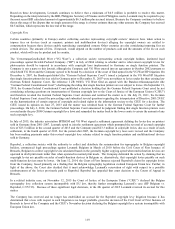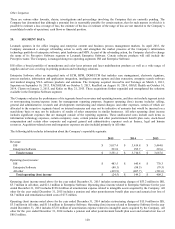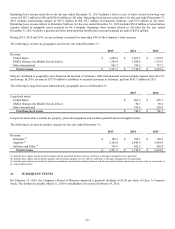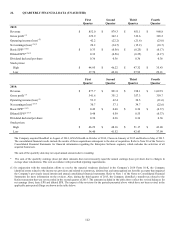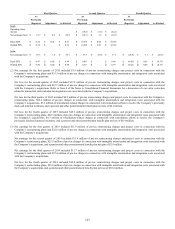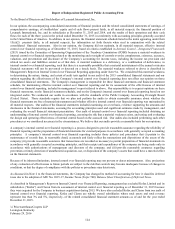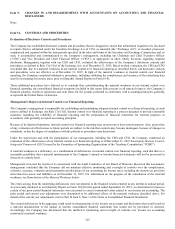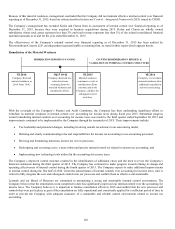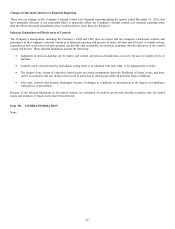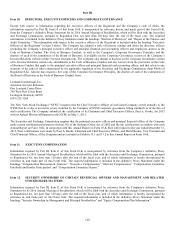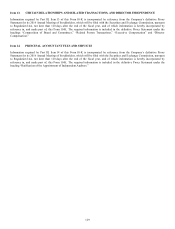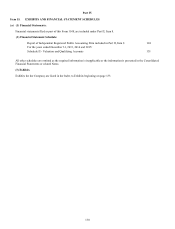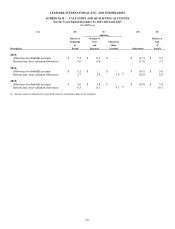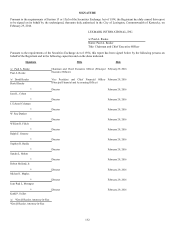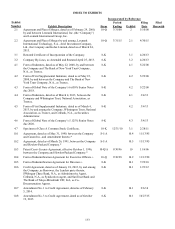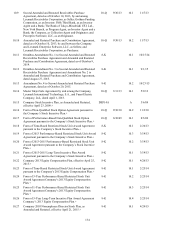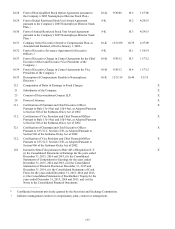Lexmark 2015 Annual Report Download - page 129
Download and view the complete annual report
Please find page 129 of the 2015 Lexmark annual report below. You can navigate through the pages in the report by either clicking on the pages listed below, or by using the keyword search tool below to find specific information within the annual report.125
Item 9. CHANGES IN AND DISAGREEMENTS WITH ACCOUNTANTS ON ACCOUNTING AND FINANCIAL
DISCLOSURE
None
Item 9A. CONTROLS AND PROCEDURES
Evaluation of Disclosure Controls and Procedures
The Company has established disclosure controls and procedures that are designed to ensure that information required to be disclosed
in reports filed or submitted under the Securities Exchange Act of 1934, as amended (the “Exchange Act”), is recorded, processed,
summarized and reported within the time periods specified in the rules and forms of the Securities and Exchange Commission and, as
such, is accumulated and communicated to the Company’s management, including our Chairman and Chief Executive Officer
(“CEO”) and Vice President and Chief Financial Officer (“CFO”), as appropriate to allow timely decisions regarding required
disclosure. Management, together with our CEO and CFO, evaluated the effectiveness of the Company’s disclosure controls and
procedures, as defined in Rule 13a-15(e) of the Exchange Act, as of December 31, 2015. Based on their evaluation, the CEO and CFO
concluded that, due to a material weakness in our internal control over financial reporting as described below, our disclosure controls
and procedures were not effective as of December 31, 2015. In light of the material weakness in internal control over financial
reporting, the Company completed substantive procedures, including validating the completeness and accuracy of the underlying data
used for accounting for income taxes, prior to filing this Annual Report on Form 10-K.
These additional procedures have allowed us to conclude that, notwithstanding the material weakness in our internal control over
financial reporting, the consolidated financial statements included in this report fairly present, in all material respects, the Company’s
financial position, results of operations and cash flows for the periods presented in conformity with accounting principles generally
accepted in the United States of America.
Management’s Report on Internal Control over Financial Reporting
The Company’s management is responsible for establishing and maintaining adequate internal control over financial reporting, as such
term is defined in Exchange Act Rule 13a-15(f). Internal control over financial reporting is a process designed to provide reasonable
assurance regarding the reliability of financial reporting and the preparation of financial statements for external purposes in
accordance with generally accepted accounting principles.
Because of its inherent limitations, internal control over financial reporting may not prevent or detect misstatements. Also, projections
of any evaluation of effectiveness to future periods are subject to the risk that controls may become inadequate because of changes in
conditions, or that the degree of compliance with the policies or procedures may deteriorate.
Under the supervision and with the participation of our management, including the CEO and CFO, the Company conducted an
evaluation of the effectiveness of our internal control over financial reporting as of December 31, 2015 based upon Internal Control-
Integrated Framework (2013) issued by the Committee of Sponsoring Organizations of the Treadway Commission (“COSO”).
A material weakness is a deficiency, or a combination of deficiencies, in internal control over financial reporting, such that there is a
reasonable possibility that a material misstatement of the Company’s annual or interim financial statements will not be prevented or
detected on a timely basis.
Management reviewed the results of its assessment with the Audit Committee of our Board of Directors. Based on this assessment,
management concluded that the Company did not maintain effective monitoring and oversight of controls over the completeness,
existence, accuracy, valuation and presentation and disclosure of our accounting for income taxes, including the income tax provision
and related tax assets and liabilities as of December 31, 2015. For information on the progress of the remediation of the material
weakness, see Remediation of the Material Weakness below.
The errors arising from the underlying deficiencies were not material to the financial results reported in any interim or annual period.
As previously disclosed in our Quarterly Report on Form 10-Q for the period ended September 30, 2015, we determined revisions to
certain of our prior period financial statements were necessary to correct immaterial errors related to our income tax accounting. The
prior period and current year adjustments were determined to be additional effects of the material weakness described above. For
details of the current year adjustments, refer to Part II, Item 8, Note 1 of the Notes to Consolidated Financial Statements.
The control deficiencies in the aggregate could result in misstatements of the income tax accounts and disclosures that would result in
a material misstatement to the annual or interim consolidated financial statements that would not be prevented or detected.
Accordingly, the Company has determined that the ineffective monitoring and oversight of controls over income tax accounting
constituted a material weakness.


